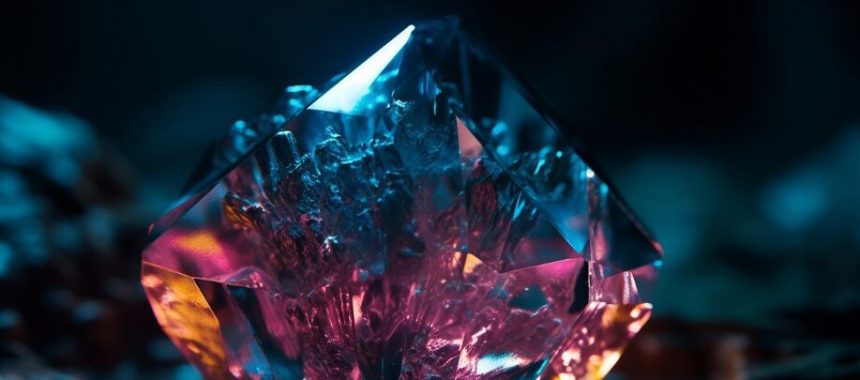Alexandrite, a gemstone shrouded in mystique and rarity, is celebrated as one of June’s three birthstones, alongside pearl and moonstone. Renowned for its remarkable color-changing ability, this chameleon-like gem transitions from lush green in daylight to rich red under incandescent light. Its allure lies not only in its optical phenomena but also in its scarcity, making it a prized possession among gem enthusiasts and collectors. This article delves into the history, properties, and significance of Alexandrite, while exploring its exquisite applications in fine jewelry, with a nod to the curated collections at SafiyaJewels.com as Alexandrite is the phenomenal birthstone for June.
Historical Significance and Discovery
Alexandrite’s story begins in 1830, when it was discovered in the Ural Mountains of Russia. Named in honor of the future Tsar Alexander II, the gemstone quickly became a symbol of Russian aristocracy. Its red and green hues mirrored the colors of the Imperial Russian military, cementing its status as a national treasure.
The original Russian deposits were largely depleted by the late 19th century, elevating natural Alexandrite to legendary status. Today, most specimens hail from Brazil, Sri Lanka, and East Africa, though none rival the historic Russian stones in prestige.
Alexandrite as June’s Birthstone
June’s association with Alexandrite is relatively modern. In 1952, the Jewelry Industry Council of America added it to June’s birthstone list, recognizing its unique beauty and rarity. For those born in June, Alexandrite symbolizes creativity, balance, and intuition—a fitting emblem for a month that bridges spring and summer.
Its dual-color nature also embodies duality and adaptability, traits that resonate with June’s dynamic energy. Beyond birthdays, Alexandrite is traditionally gifted for 55th wedding anniversaries, representing enduring love and transformation.
The Phenomenon of Color Change
Alexandrite’s mesmerizing color shift, known as the “Alexandrite effect,” stems from its complex mineral composition. As a variety of chrysoberyl, it contains trace amounts of chromium, which absorb specific light wavelengths. In daylight (rich in blue/green light), the gem appears emerald-green. Under incandescent light (red/yellow dominance), it shifts to ruby-red or purplish hues.
The most coveted stones exhibit a 100% color change, though even partial shifts are captivating. This optical magic has earned Alexandrite the nickname “emerald by day, ruby by night.”
Rarity and Value Factors
Natural Alexandrite is among the rarest gemstones, with high-quality specimens exceeding the price of diamonds. Key factors influencing its value include:
- Color Change: The intensity and contrast between hues determine quality. Vivid green-to-red transitions command premium prices.
- Clarity: While most Alexandrites have inclusions, eye-clean stones are exceptionally rare.
- Carat Weight: Larger gems (over 1 carat) are scarce, especially from Russian origins.
- Origin: Russian Alexandrite remains the gold standard, though Brazilian and Sri Lankan stones are also valued.
Lab-created Alexandrite offers an affordable alternative, replicating the color change but lacking natural rarity.
Alexandrite in Jewelry: Craftsmanship and Design
Alexandrite’s versatility makes it a favorite among jewelers. At SafiyaJewels.com, artisans highlight its elegance through bespoke designs:
- Rings: Solitaire settings emphasize the gem’s color shift, while halo designs with diamonds enhance its brilliance.
- Necklaces and Pendants: Alexandrite centers as a statement piece, often paired with white gold or platinum to accentuate its cool undertones.
- Earrings: Teardrop or stud designs showcase smaller stones, ideal for subtle sophistication.
Customization is key, with Safiya Jewels offering heirloom-quality pieces that blend vintage inspiration with modern aesthetics.
Caring for Alexandrite Jewelry
Though durable (8.5 on the Mohs scale), Alexandrite requires mindful care:
- Cleaning: Use mild soap, warm water, and a soft brush. Avoid ultrasonic cleaners.
- Storage: Keep separate from harder gems to prevent scratches.
- Protection: Remove jewelry during physical activities or exposure to harsh chemicals.
Regular professional check-ups ensure settings remain secure.
Ethical Considerations and Sustainability
As demand grows, ethical sourcing becomes paramount. Reputable jewelers like SafiyaJewels.com prioritize conflict-free stones and transparent supply chains. Lab-grown Alexandrite offers an eco-friendly alternative, reducing environmental impact without compromising beauty.
Conclusion
Alexandrite’s enchanting color shift, historical gravitas, and scarcity make it a gemstone like no other. Whether as a June birthstone, an anniversary gift, or a personal indulgence, it embodies elegance and transformation. Explore SafiyaJewels.com to Explore rare Alexandrite jewelry that captures its timeless magic, blending artistry with the wonders of nature.
In a world where gemstones tell stories, Alexandrite whispers tales of Russian tsars, cosmic duality, and the eternal dance of light—a jewel truly worthy of its legendary status.








